NOSFERATU (1922)
Vampire Count Orlok expresses interest in a new residence and a real estate agent's wife.
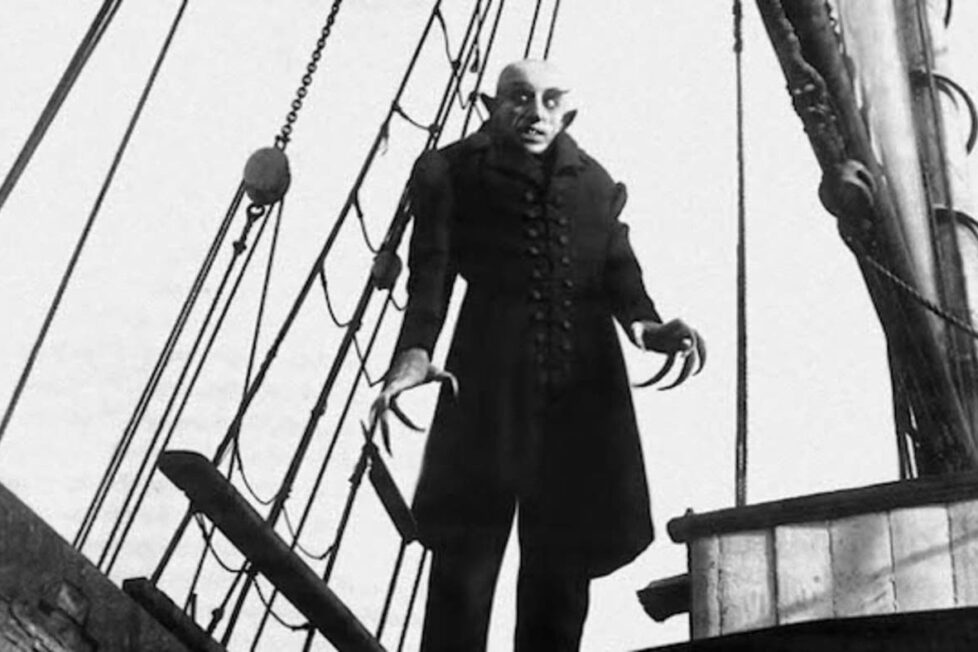
Vampire Count Orlok expresses interest in a new residence and a real estate agent's wife.


As we celebrate 100 years of F.W Murnau’s silent horror classic Nosferatu: A Symphony of Horror / Nosferatu—Eine Symphonie des Grauens, it’s tempting to imagine what it must have been like seeing it for the first time in Germany back in 1922. Would audiences still carrying the mental and physical scars of World War I have found it all a bit ridiculous, or would the film’s unearthly ambience have got under their collective skin and haunted their dreams? Even for those fully versed in the sinister shadows and warped reality of German expressionism, I suspect it would’ve been the latter.
The story of Nosferatu’s creation is well known. An unauthorised and unofficial adaptation of Bram Stoker’s 1897 novel Dracula, the makers of the picture (the short-lived Prana Film) were successfully sued by the Irish author’s widow and a court ordered all copies destroyed. Thankfully, several prints survived the purge and the lovingly restored version gracing UK cinemas this year in celebration of Nosferatu’s centenary—complete with a re-recording of the original orchestral score by Hans Erdmann—is very close to how the film would’ve looked a hundred years ago. No wonder the New York Times recently called it “the vampire movie that wouldn’t die.”
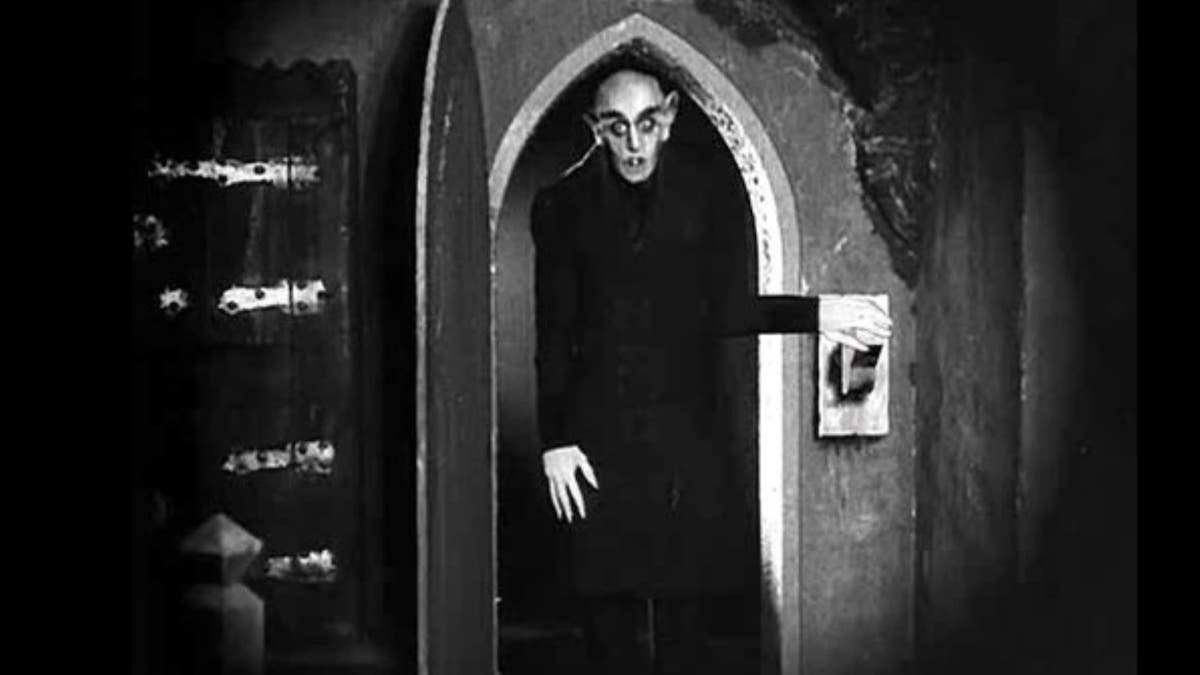
Despite those early hiccups, Nosferatu’s reputation has only grown over the years. By modern standards the film might not be trouser-wettingly scary or especially horrifying (no gore or jump-scares here), but 10 decades after it first saw the light of day, Max Schreck’s extraordinary titular character—a.k.a Count Orlok—remains one of cinema’s creepiest creations, the film’s sense of apocalypse and dread the foundation upon which literally thousands of other horror movies have since been built.
Without damning Murnau’s best-known work with faint praise, one of the reasons why Nosferatu is often rated the best Dracula adaptation is because a depressing number of the movies that followed it aren’t especially good, and that goes for vampire movies in general (for every Near Dark or Let the Right One In, there are a dozen or more absolute stinkers). Dracula, himself, is essentially a middle-aged man in a tuxedo who wants to bite your neck—often more office sex pest than ruler of the undead. Occasionally, an actor will inhabit the role and take it somewhere interesting (Christopher Lee’s murderous physicality, Frank Langella’s more seductive take), but it’s rare and increasingly so. Nosferatu was created at a time when vampire fiction—on or off screen—was pretty much a blank slate, so the sub-genre’s fresh rules and tropes wouldn’t become the stuff of eye-rolling cliché for many years.
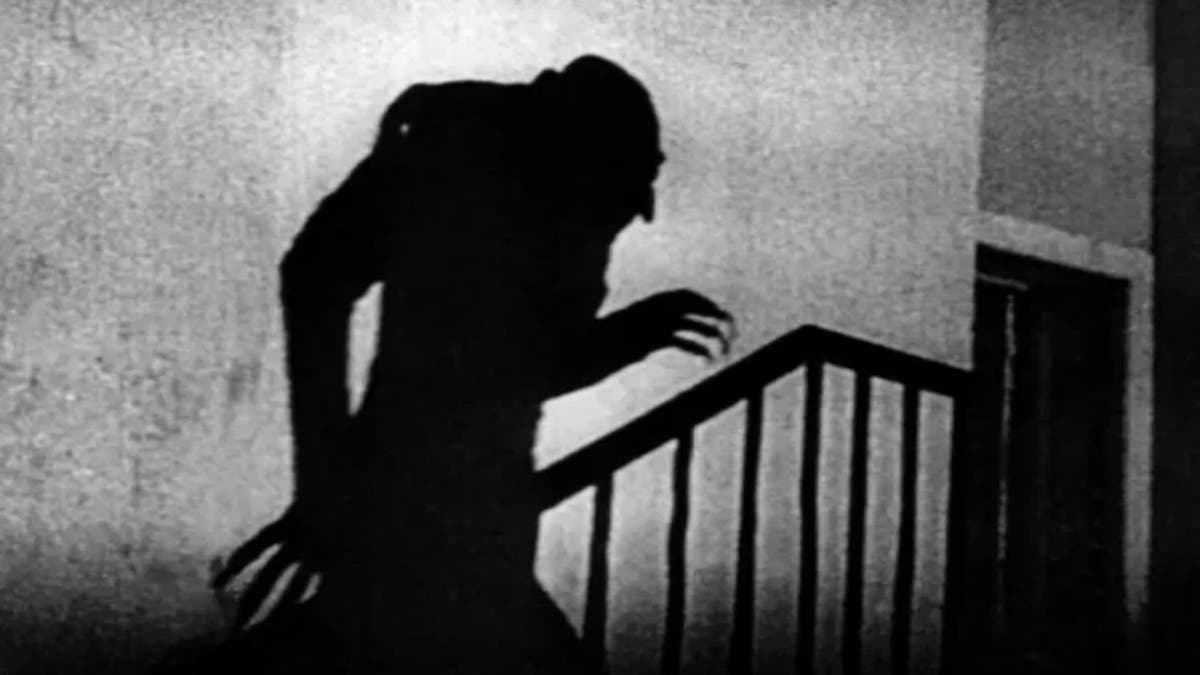
Nosferatu makes its Dracula surrogate thoroughly inhuman (definitely not a horny bloke in a tux). Schreck plays him as a half-man/half-rat hybrid with two sharp little front teeth and big, clawed hands. There are also times when the wiry actor physically constricts his body like a snake, the sort of creature who could easily pop down your chimney or squeeze through a half-open window. Murnau—who left Germany for Hollywood in 1926 where he made the classic Sunrise (1927) before dying in a car accident at the age of 42 in 1931—knew precisely how unsettling Schreck is and absolutely revelled in it. The unforgettable moment in the ship’s hold when Orlok stands up straight, stiff as a board, as if being pulled by an invisible wire (to be fair, he probably is being pulled by an invisible wire) is about as chilling as early horror cinema gets. Not just a brilliantly utilised visual effect, coming almost exactly an hour into the film, it’s a clever bit of storytelling too; one of the picture’s scariest moments perfectly timed to whet our appetite for the grand finale.
Schreck achieves his nightmarish countenance adorned in little more than a bald wig (you really notice it close up), big false ears and some stick-on claws. He should look thoroughly ridiculous—like something from a low-rent Halloween party—but the actor’s appearance and performance are so nightmarish you are utterly mesmerised from the off. When Orlok pops his little rat head out of the ship’s hold upon arrival in Wisborg, it’s easy to fully believe this is a creature that “sprang from Belial’s seed” and dwells in coffins filled with “god-curst earth from the fields of the black death” as the film’s intertitles put it.
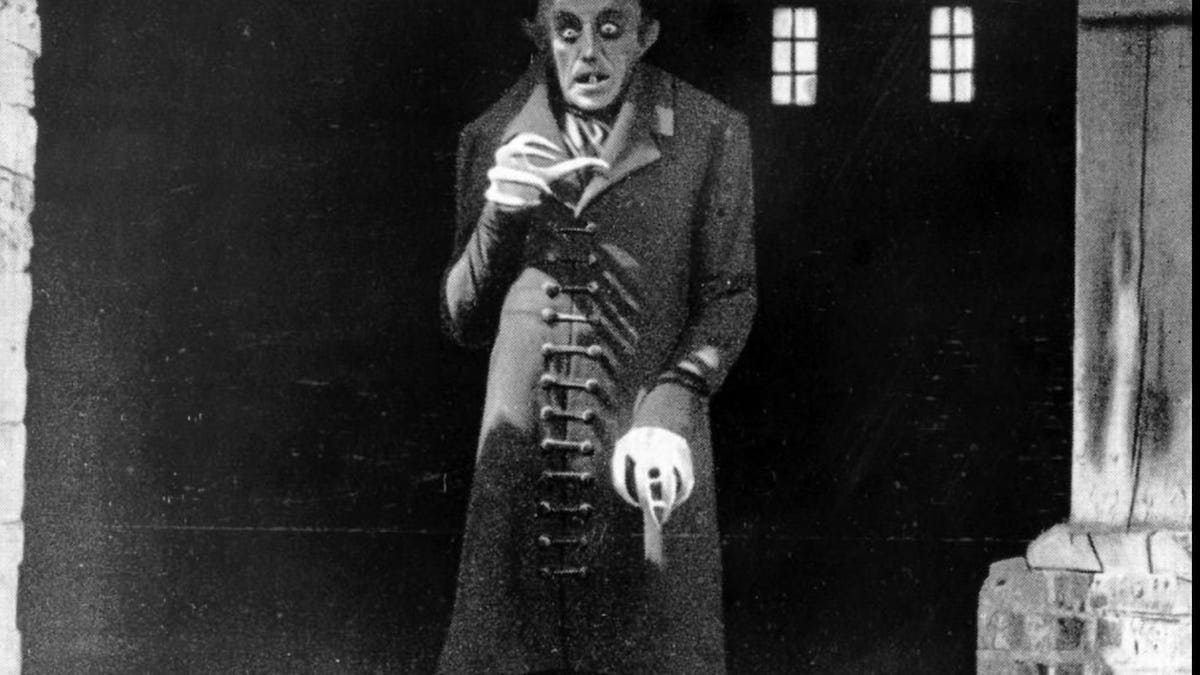
Nosferatu’s plot follows that of Dracula quite closely. Property agent Thomas Hutter (Gustav von Wangenheim) is despatched by his boss Knock (Alexander Granach) from the German town of Wisborg to Transylvania, there to advise their client Count Orlok, who’s keen to buy a property in the area. Orlok is a vampire and drinks his blood (Hutter believes he’s suffering from “mosquito bites”). The Count sees a photo of Ellen (Greta Schröder)—“Your wife has a lovely neck!”—and falls for her immediately, even managing to form some sort of long-distance psychic connection with the woman. He decides to buy the house directly opposite Hutter and Ellen’s and sets off for Wisborg on a ship—The Empusa—to claim his victim. (Yes, 63 years before 1985’s Fright Night, Nosferatu tackled the idea of having a vampire for a neighbour).
Murnau’s film streamlines Stoker’s original story, concentrating on four main characters: Hutter, Ellen, Orlok, and Knock, Nosferatu’s Renfield stand-in and a creature so deranged and sinister he’d be a shoo-in as the UK’s next foreign secretary. There are no vampire brides, no Lucy Westenra, and characters who could be based on Abraham Van Helsing and Quincey Morris are kept well in the background. It’s a shame to lose some of the novel’s rich Dracula lore, although, to compensate, Murnau does introduce the idea of direct sunlight being lethal to vampire kind. The changes allow the director to focus on the story’s bizarre “love” triangle and on certain set-piece scenes, bringing it all home in a tight 97-minutes.
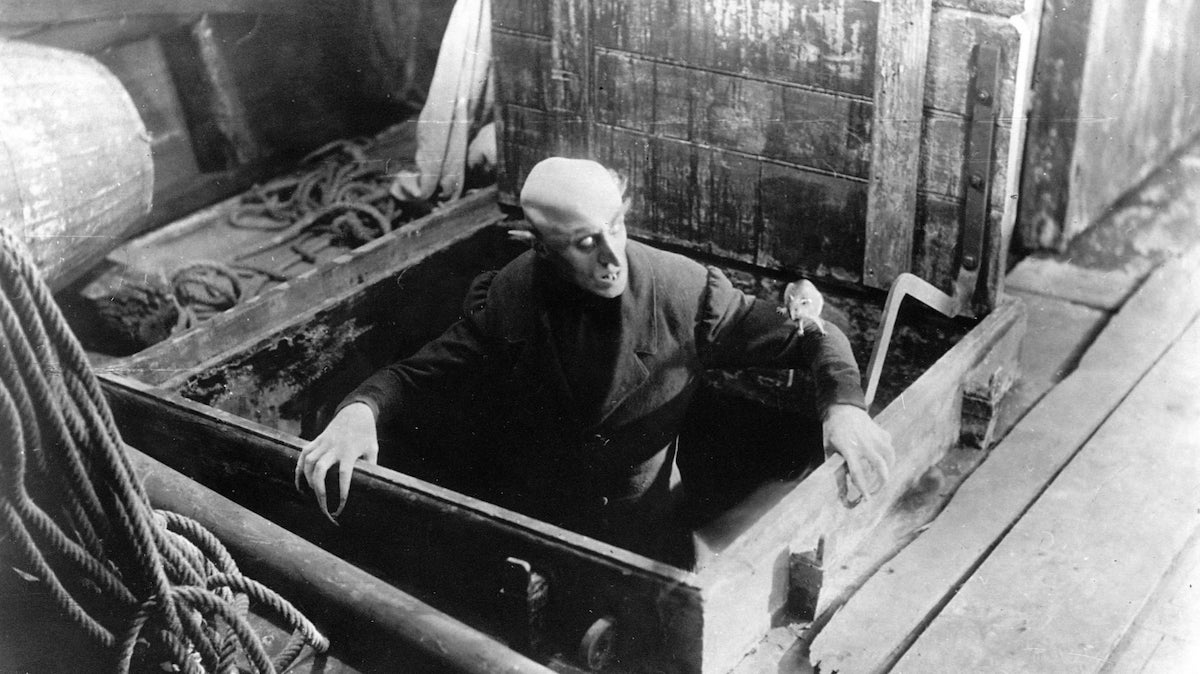
Despite its gloomy, apocalyptic tone, there are a couple of unintended comic moments. Terrified Transylvanian townsfolk talk of a “werewolf roaming the woods” before we cut to footage of what is clearly a striped hyaena a long way from home. And when Orlok eventually reaches Wisborg, he wanders about the town with his coffin tucked under his arm, as if he has just been chucked out by his wife after a row.
Although it’s possible to find black-and-white versions of the film, originally Nosferatu was colour tinted. At its most basic, Murnau uses blue to denote night, and sepia for day. But the director makes use of his limited palette in more subtle ways too. Sepia is particularly effective in certain scenes featuring The Empusa as it bears Orlok to Wisborg, the sickly patina perfectly reflecting what is happening on board—the crew falling deathly sick as the vampire takes them out one by one.
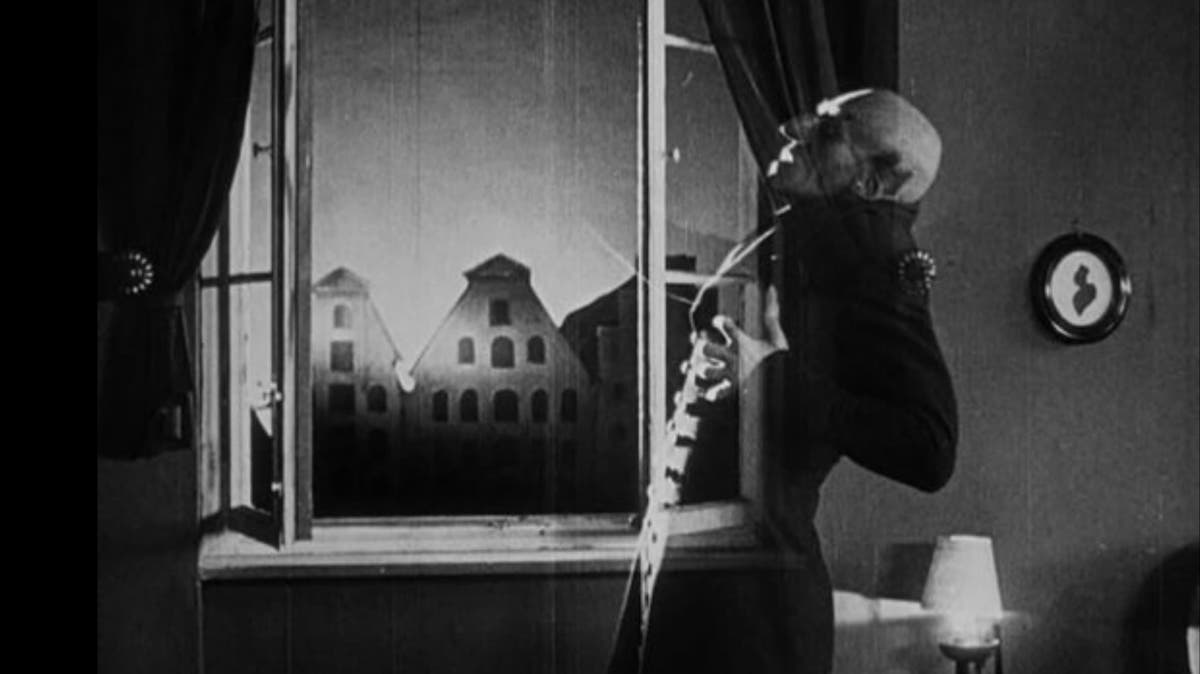
Murnau adopts a whole host of other VFX too: stop-motion camerawork makes Orlok’s movements seem super-fast in certain scenes, the great gate to the Count’s castle opens and his coffin lid levitates as if by magic in others. A spectral Orlok appears in the ship’s hold terrifying the crew. Most impressively of all, though, are the animated segments in which Orlok’s shadow appears to have a life of its own—creeping up some stairs in one scene, a vast silhouette on a wall in another. A ridiculously simple idea, it is nevertheless still celebrated—and much emulated—a century later.
After the last couple of COVID-blighted years, it’s impossible to talk about Nosferatu without reference to disease. It turns out those coffins filled with “god-curst earth” are also chock-full of plague rats, and Orlok’s appearance in Wisborg unleashes the black death on the town. Scenes in which a doctor goes from door to door drawing simple chalk crosses on plague houses, and another in which a parade of coffins makes its way down one of the town’s narrow streets, are discomforting enough, made more so by knowledge of the millions who have died worldwide from coronavirus. The vampire as a metaphor for contagion has been explored many times over the last hundred years, in all sorts of fiction, but I’m not sure the idea has ever seemed more disturbingly relevant.
GERMANY • 1922 • 97 MINUTES • 1.37:1 • COLOUR (TINTED) • SILENT (GERMAN INTERTITLES / ENGLISH SUBTITLES)
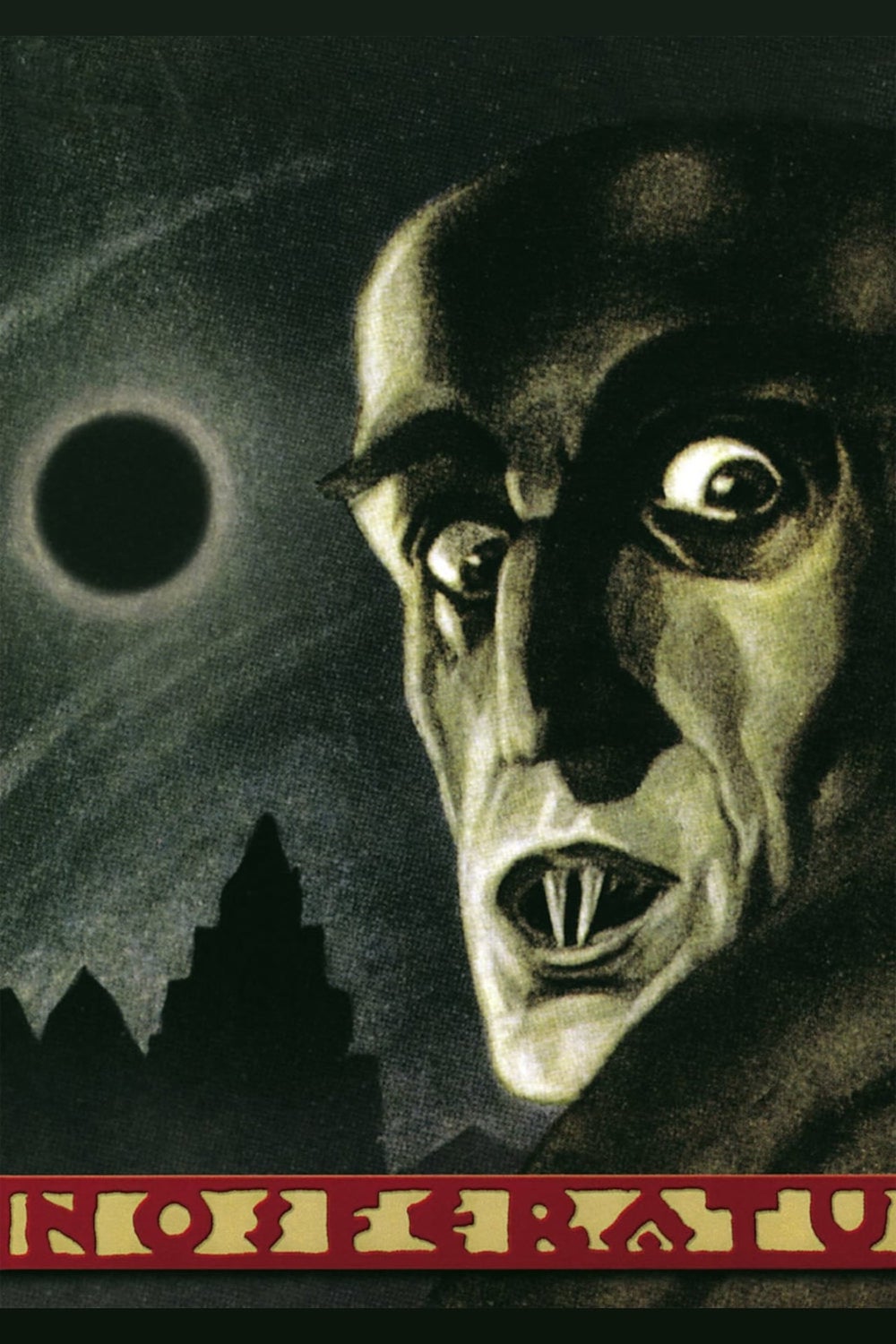
director: F.W Murnau.
writer: Henrik Galeen (based on the novel ‘Dracula’ by Bram Stoker).
starring: Max Schreck, Gustav von Wagenheim, Greta Schröder, Alexander Granach, Ruth Langhoff & Wolfgang Heinz.
1 Comments
This site uses Akismet to reduce spam. Learn how your comment data is processed.

Hello. And here I am after following you from your Twitter account. Regards. A new fan. 👍